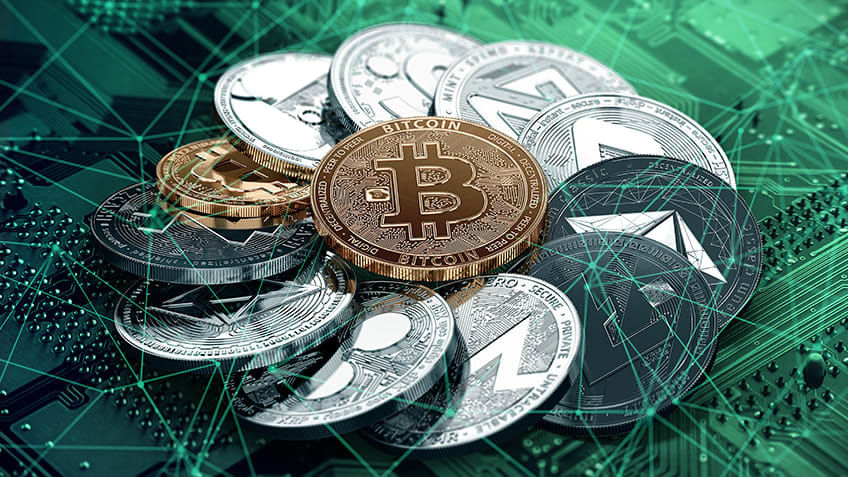Hawk tuah girl cryptocurrency lawsuit
A hard fork is a protocol upgrade that is not backward compatible. This means every node (computer connected to the Bitcoin network using a client that performs the task of validating and relaying transactions) needs to upgrade before the new blockchain with the hard fork activates and rejects any blocks or transactions from the old blockchain https://whatistheisland.com/1200-year-old-artificial-island-found-on-earth/. The old blockchain will continue to exist and will continue to accept transactions, although it may be incompatible with other newer Bitcoin clients.
Just two months later, on January 3, 2009, Nakamoto mined the first block on the Bitcoin network, known as the genesis block, thus launching the world’s first cryptocurrency. Bitcoin price was $0 when first introduced, and most Bitcoins were obtained via mining, which only required moderately powerful devices (e.g. PCs) and mining software. The first known Bitcoin commercial transaction occurred on May 22, 2010, when programmer Laszlo Hanyecz traded 10,000 Bitcoins for two pizzas. At Bitcoin price today in mid-September 2021, those pizzas would be worth an astonishing $478 million. This event is now known as “Bitcoin Pizza Day.” In July 2010, Bitcoin first started trading, with the Bitcoin price ranging from $0.0008 to $0.08 at that time.
Bitcoin’s total supply is limited by its software and will never exceed 21,000,000 coins. New coins are created during the process known as “mining”: as transactions are relayed across the network, they get picked up by miners and packaged into blocks, which are in turn protected by complex cryptographic calculations.
Cryptocurrency
Various studies have found that crypto-trading is rife with wash trading. Wash trading is a process, illegal in some jurisdictions, involving buyers and sellers being the same person or group, and may be used to manipulate the price of a cryptocurrency or inflate volume artificially. Exchanges with higher volumes can demand higher premiums from token issuers. A study from 2019 concluded that up to 80% of trades on unregulated cryptocurrency exchanges could be wash trades. A 2019 report by Bitwise Asset Management claimed that 95% of all bitcoin trading volume reported on major website CoinMarketCap had been artificially generated, and of 81 exchanges studied, only 10 provided legitimate volume figures.
Systems of anonymity that most cryptocurrencies offer can also serve as a simpler means to launder money. Rather than laundering money through an intricate net of financial actors and offshore bank accounts, laundering money through altcoins can be achieved through anonymous transactions.
Dark money has also been flowing into Russia through a dark web marketplace called Hydra, which is powered by cryptocurrency, and enjoyed more than $1 billion in sales in 2020, according to Chainalysis. The platform demands that sellers liquidate cryptocurrency only through certain regional exchanges, which has made it difficult for investigators to trace the money.
In 1983, American cryptographer David Chaum conceived of a type of cryptographic electronic money called ecash. Later, in 1995, he implemented it through Digicash, an early form of cryptographic electronic payments. Digicash required user software in order to withdraw notes from a bank and designate specific encrypted keys before they could be sent to a recipient. This allowed the digital currency to be untraceable by a third party.
Jordan Kelley, founder of Robocoin, launched the first bitcoin ATM in the United States on 20 February 2014. The kiosk installed in Austin, Texas, is similar to bank ATMs but has scanners to read government-issued identification such as a driver’s license or a passport to confirm users’ identities.
In 2018, an increase in crypto-related suicides was noticed after the cryptocurrency market crashed in August. The situation was particularly critical in Korea as crypto traders were on “suicide watch”. A cryptocurrency forum on Reddit even started providing suicide prevention support to affected investors. The May 2022 collapse of the Luna currency operated by Terra also led to reports of suicidal investors in crypto-related subreddits.

Pi network cryptocurrency
Dr. Chengdiao Fan holds a Stanford PhD in Anthropological Sciences, harnessing social computing to unlock human potential on a global scale. Chengdiao is building Pi Network to mobilize individuals all over the world to participate and be rewarded for their contributions, and establish an inclusive ecosystem for global citizens to unleash and capture their own agency, and in turn create utilities and productions for society and the world.
Created by a chief scientist at Stellar Development Foundation, David Maziéres, who developed the Stellar blockchain, the SCP protocol uses a real voting system. In this case, the protocol enables an open membership network and allows fast and efficient messaging between nodes.
Pi Network is a cryptocurrency that introduces a novel approach to crypto mining. While for many years, the legitimacy of the Pi Network has been under question, in 2025 the mainnet is set to finally launch. Learn about Pi Network, Pi coin, and how to mine it in this ultimate guide.
The live Pi price today is $1.20 USD with a 24-hour trading volume of $735,715,771 USD. We update our PI to USD price in real-time. Pi is up 6.38% in the last 24 hours. The current CoinMarketCap ranking is #18, with a live market cap of $8,550,303,273 USD. It has a circulating supply of 7,116,430,295 PI coins and a max. supply of 100,000,000,000 PI coins.
Pi Network follows a one-account-per-person policy through its Know Your Customer (KYC) solution. This system combines machine automation and human verification to authenticate user identities while preserving privacy. The KYC process emphasizes real individuals, combats fraudulent activities and enables fair participation in the mining process of the network. Pi’s identity verification approach balances scalability, security, and accessibility, allowing millions of users worldwide to validate their accounts while maintaining regulatory compliance.
